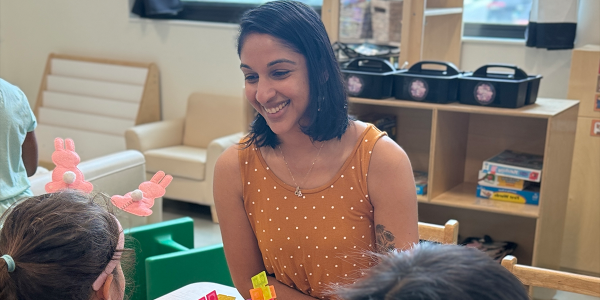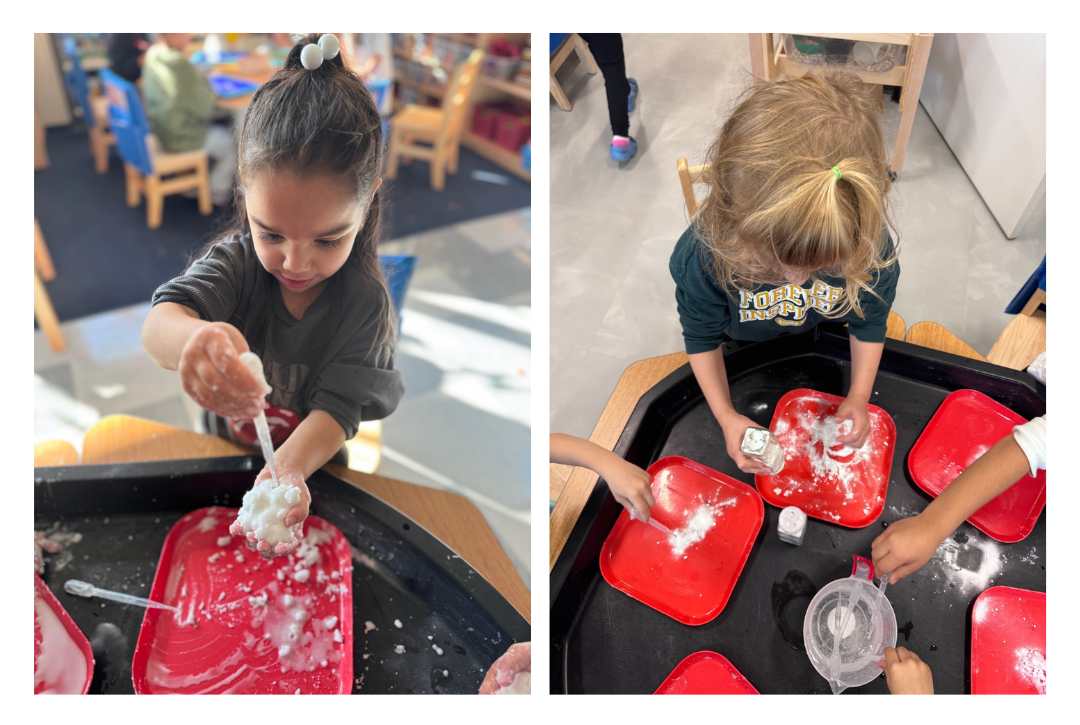Teacher Reflection. Fostering Exploration to Elevate a Common Experiment

You are here
At the table, 4-year-olds Jax and Emma sit beside me, eyes wide with curiosity. In front of us are cups of baking soda, vinegar, water, and a few mystery powders. “What do you think will happen with these?” I ask, pointing to the cups on the table.
Jax reaches for the baking soda. “This one makes bubbles with vinegar!” he says. Emma touches one of the mystery powders. “This feels different,” she says.
“Do you think it will bubble too?” I ask, guiding the children’s curiosity. As we mix each powder with a liquid, Jax and Emma grow more curious—delighted by some reactions, puzzled by others. When Emma’s powder doesn’t fizz, we don’t call it a failure. Instead, we wonder aloud, testing new combinations and drawing connections among textures, smells, and results.
As the prekindergarten STEM (science, technology, engineering, and math) teacher at Beard Elementary School in Chicago, Illinois, I get to work each week with about 200 budding scientists. After beginning the year with a unit about making observations using our five senses, I engage children with what seems like a simple experiment: combining baking soda and vinegar.
This is a common experiment in early childhood settings. It utilizes everyday, inexpensive materials, and children love the immediate, fizzing reaction that occurs. However, I don’t end this experiment with just baking soda and vinegar. After our initial testing, I start introducing a variety of substances (dish soap, oil, water, salt, sugar, flour), and I encourage active, multimodal learning. My goal is for children to wonder, ask questions, try different things, and experiment. This open-ended approach lets us move beyond the predictable, inviting deeper curiosity and exploration at every turn. While children may not fully understand the science concepts at play—that a chemical reaction occurs when an acid is mixed with a base—they do understand that change can happen when you mix substances.
We begin our baking soda and vinegar activity by using our five senses to make observations. As children observe, I chart what they notice:
- Baking soda looks white like snow.
- It feels smooth.
- It smells like nothing.
- It tastes a little salty.
- It doesn’t make a sound unless you shake the box.
When it comes to the vinegar, children always think it’s water . . . until we use our sense of smell! This really engages multimodal learning because the children can engage all of their senses to describe the materials.

I then set up the question we’re investigating: What will happen when we mix these ingredients? The children brainstorm, generate ideas, and make predictions about what might occur. I get responses like “It’s going to explode” or “It’s going to melt away.” I chart their predictions without correcting any inaccurate assumptions. My goal here is to encourage the children to wonder, not to get the right answer.
Next, I present children with different tools (droppers, spoons of different sizes, containers of different sizes). I make sure they’ve already worked with these items, so they know how each is used. They choose their tools, then draw a picture of what they think will happen once they mix the baking soda and vinegar. Finally, they begin to mix the two substances. The children are excited to see the bubbles and hear the fizzing sound! They often compare it to the bubbles in a soda can and wonder how they can make more bubbles.
Our exploration of chemical reactions lasts multiple weeks. In subsequent lessons, I offer children other materials to combine in addition to baking soda and vinegar. These include dish soap, oil, water, sugar, salt, and flour. I also offer food coloring, so children can incorporate color mixing into their explorations. Children have autonomy over these materials: They choose which and how much of each ingredient to use. This allows for their curiosity to drive the lesson, and each child’s experimenting looks different.
Throughout this experience, the children document their learning by drawing the different reactions they observe. This allows me to scaffold their understanding and present follow-up lessons. For example, when children notice that soap also creates bubbles when combined with a liquid, we discuss how the two types of bubbles are different: Soap bubbles are air trapped inside the soap mix (which is why we can blow soap bubbles with a bubble wand), but baking soda and vinegar bubbles are a special type of air (carbon dioxide) that is created when those two substances are mixed. We also talk about how soap bubbles last longer, can float away, and can get big, while the baking soda and vinegar bubbles pop quickly and are really small.
By deeply engaging and experimenting with materials, children begin to think creatively, critically, and independently. Through asking questions, imagining possibilities, planning their approaches, and creating their experiments, they develop a strong foundation in problem solving, science concepts, and a growth mindset. My hope is that these hands-on, inquiry-based activities not only make science accessible and exciting but also instill a lifelong love of learning and discovery.
Photographs: courtesy of the author
Copyright © 2025 by the National Association for the Education of Young Children. See permissions and reprints online at NAEYC.org/resources/permissions.
Margi Bhansali, NBCT, is a preschool STEM educator at Beard Elementary School in Chicago, Illinois. She is an advocate for play-based learning and an amateur writer. Her op-eds have been published in venues including the Chicago Tribune, Chicago Unheard, and What’s the Plus.